Follow my easy technique in this recipe to make perfect Soft-Boiled Eggs every time! With their warm and runny golden yolks, Hanjuku Tamago will make your bento, ramen, or curry rice dishes feel extra special and satisfying. They‘re delicious as a snack, too.

Boiling eggs may seem like the simplest kitchen task one can accomplish in a blink of an eye, but most of us know it is much trickier than that. If you have never made soft-boiled eggs because it looks more intimidating than hard-boiled eggs, then I hope this step-by-step recipe will encourage you to give it a try!
The Perfect Hanjuku Tamago
Called Hanjuku Tamago (半熟卵) in Japanese, jammy soft-boiled eggs are delicious on their own but also add a creamy texture and rich flavor to the final dish.
I like to prepare Hard Boiled Eggs and Soft-Boiled Eggs for Japanese dishes like Ramen, Udon, and Japanese Curry Rice. They never failed to make a dish extra special and extra satisfactory.
Hanjuku tamago is the key ingredient in making ramen eggs.
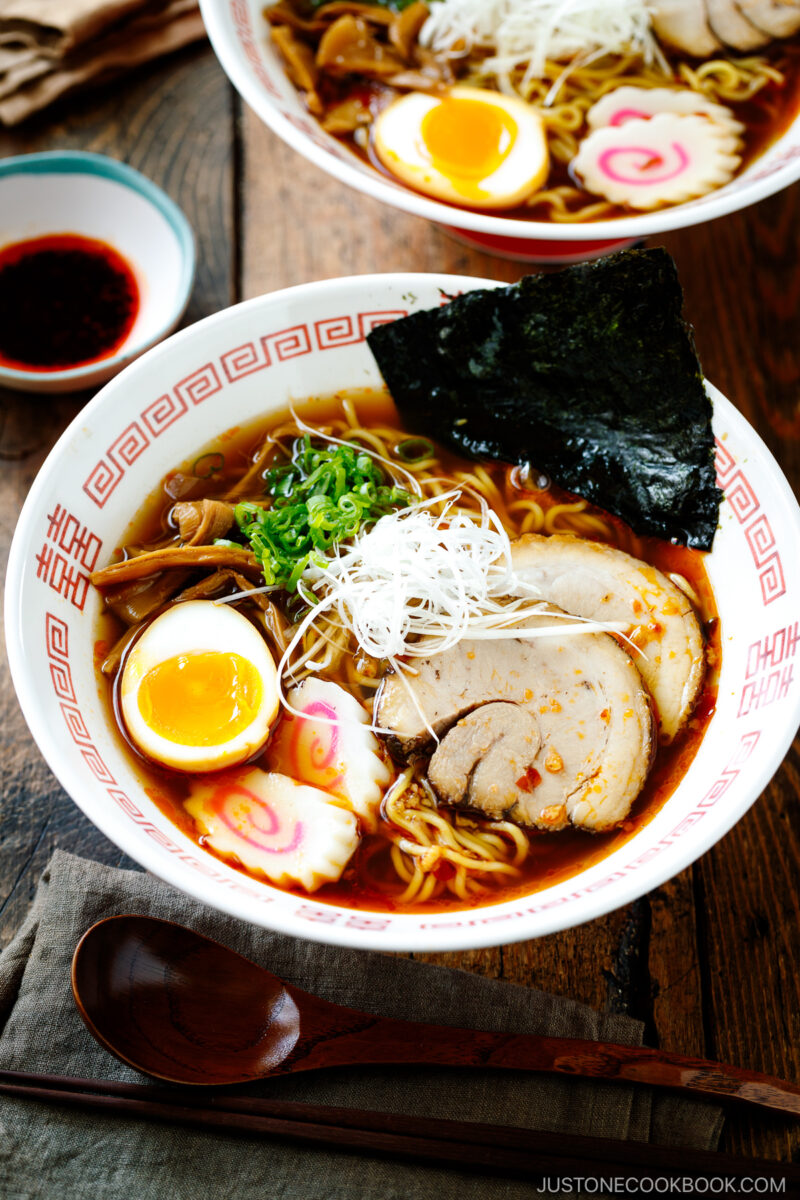
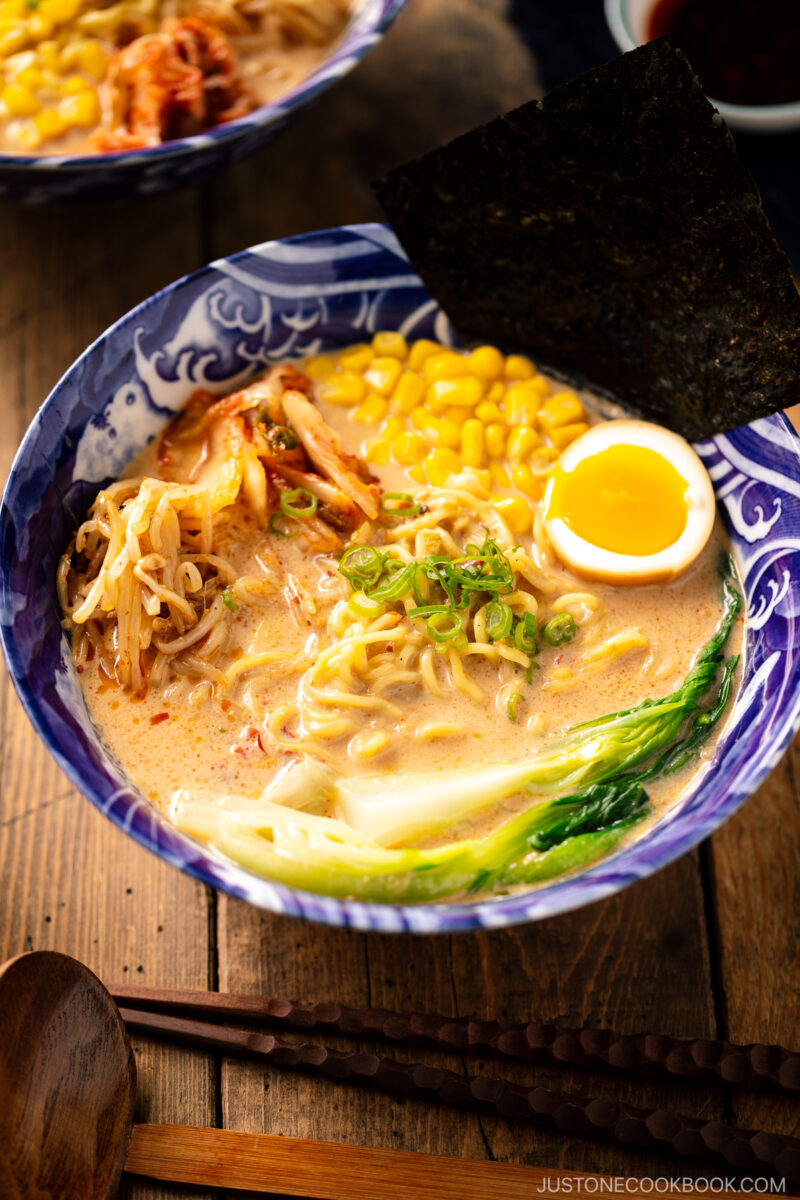
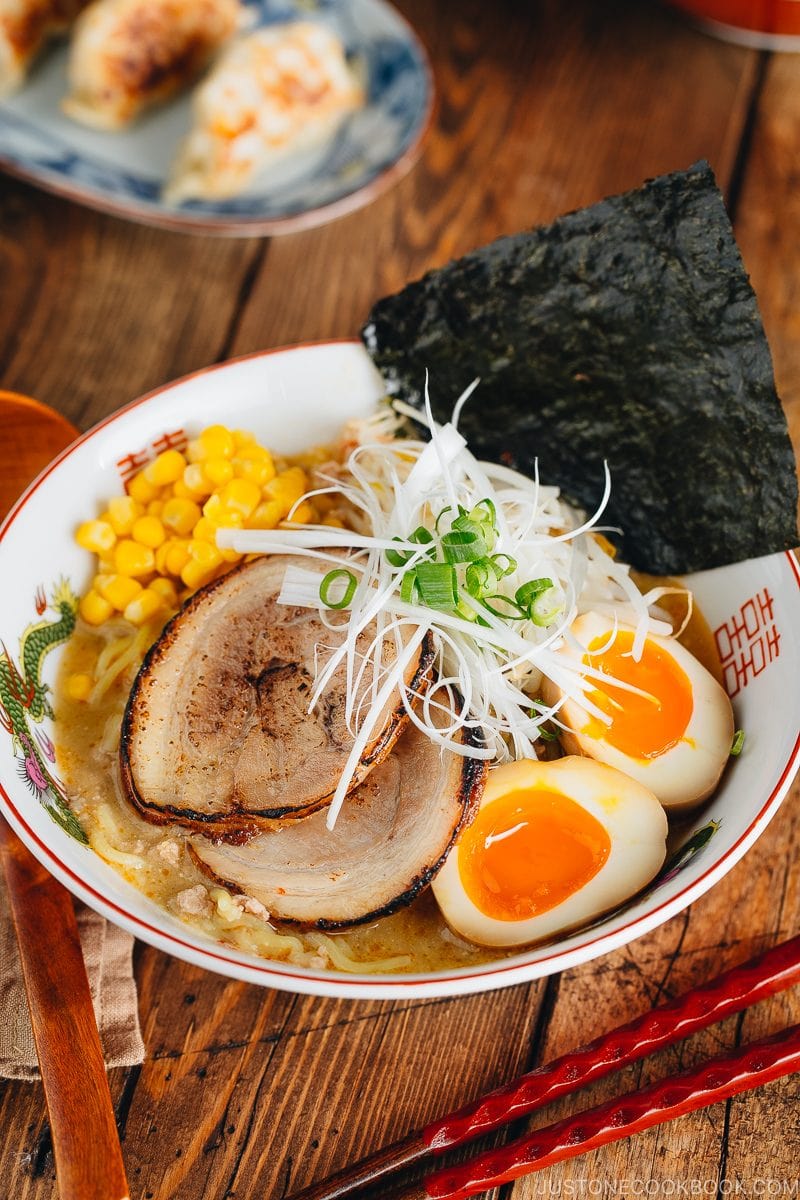
How to Make Perfect Soft-Boiled Eggs
To achieve the right texture for soft-boiled eggs, timing is key.
- Fill your saucepan with enough water so the eggs will be submerged completely. Bring it to a boil.
- Once reaching a rolling boil, quickly but gently but quickly put in the eggs from the refrigerator one at a time before you reduce the heat to a simmer.
- Set the timer to 6.5 to 7 minutes.
- When it’s done cooking, stop the cooking process immediately by submerging the eggs in an iced bath for 3 minutes.
- Once the eggs are cooled, peel the eggshell, and they will be good to go. The whites of the soft-boiled eggs should be firm (but not overly hard) and the yolks should be warm and runny.
Enjoy Soft-Boiled Eggs
Sometimes I eat soft-boiled eggs as a snack too. Just a light sprinkle of furikake (rice seasonings) and shichimi togarashi (Japanese seven spice) before you dig in. It is as good as a snack can get!
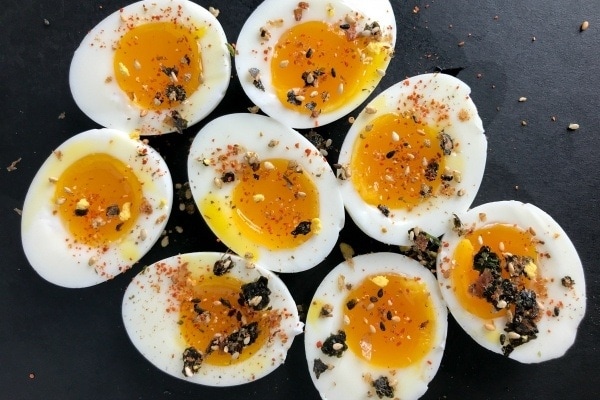
Now that you’ve learned the simple technique of making perfect soft-boiled eggs, I hope you get to enjoy your ramen or rice dishes with this protein-packed companion. Like a molten lava cake with oozing chocolate, nothing is more luxurious than when you slice open the soft-boiled eggs to reveal the golden runny yolk.
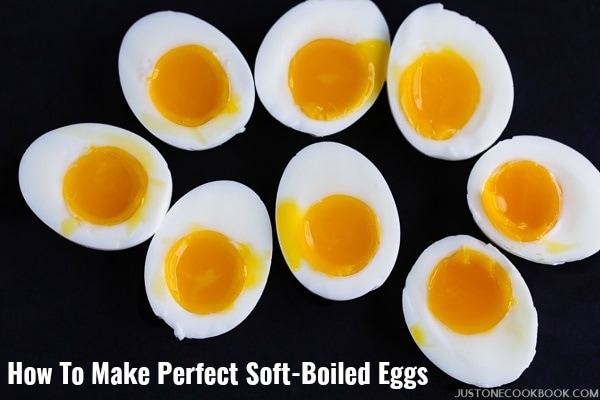
Wish to learn more about Japanese cooking? Sign up for our free newsletter to receive cooking tips & recipe updates! And stay in touch with me on Facebook, Pinterest, YouTube, and Instagram.
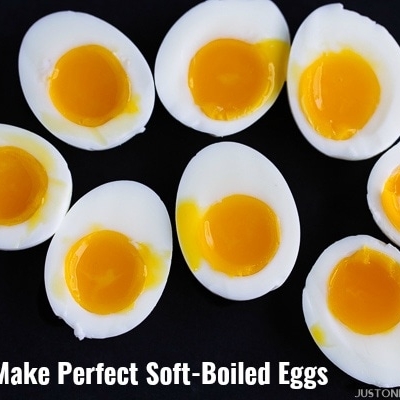
How to Make Perfect Soft-Boiled Eggs (Hanjuku Tamago)
Ingredients
- 4 large eggs (50 g each w/o shell) (refrigerated)
- water
- ice cubes (for the iced water)
Instructions
- To a saucepan, add enough water to cover the eggs by 1 inch, 2.5 cm (you will add the eggs later). Bring the water to a rolling boil on medium heat.

- Once the water is boiling, take out 4 large eggs (50 g each w/o shell) from the refrigerator. Using a slotted spoon, gently put the cold eggs into the boiling water.

- Reduce the heat to a simmer and cook the eggs for 6½ to 7 minutes (set a timer). To keep the yolks in the center of the boiled eggs, gently rotate the eggs with chopsticks once in a while for the first 3 minutes. Note: The cooking time may vary depending on the size and starting temperature of the eggs. If you prefer runnier yolks, cook for 1 minute less.

- Prepare a bowl of iced water by adding ice cubes to water. After 6½ or 7 minutes, drain the boiling water and shock the eggs in the iced water for 3 minutes. Gently peel the egg shell. Your Hanjuku Tamago is now ready to enjoy.

To Serve
- Cut the eggs in half with a sharp knife, cheese cutter, fishing line, or string and serve. You can enjoy them as a snack sprinkled with furikake (rice seasoning) and shichimi togarashi (Japanese seven spice). Tuck them into your bento or add as a topping to your ramen, udon, and Japanese curry rice. You also can use these soft-boiled eggs to make seasoned Ramen Eggs (Ajitsuke Tamago).
To Store
- Store the soft-boiled eggs in an airtight container and refrigerate for up to 3–4 days. Do not freeze as the texture of the eggs will change when frozen.
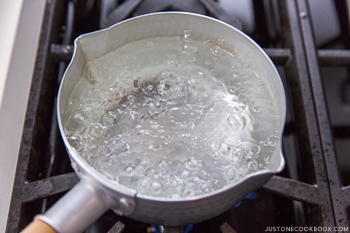
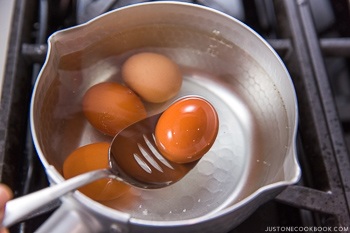
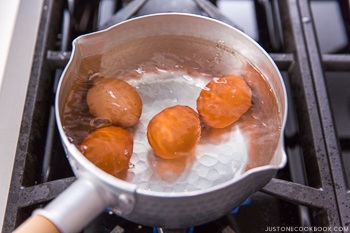
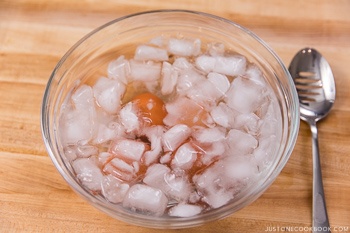










Hi, thanks for the recipe. I live in a country where eggs are not refridgerated. Do you know how I should adjust cooking time to accomodate?
Hi May! Thank you very much for reading Nami’s post and trying her recipe!
We did not test this recipe with room temperature eggs and are unsure about its cooking time.
Cook it for one minute less might work. Please let us know how it goes!
it’s sounds so simple but it’s hard to get right. How long can eggs keep in the refrigerator?
Hi Natasha, Thank you very much for trying this recipe! You may store unpeeled, soft-boiled eggs in the refrigerator for up to 2 days.
We hope this helps!
i was wondering if you can store soft boiled eggs in the fridge? i wanted to pack one in a bento for lunch tomorrow and was hoping to meal prep tonight. thank you!
Hi Viviana,
You may store unpeeled, soft-boiled eggs in the refrigerator for up to 2 days.
We hope this helps!
The eggs tend to burst after putting them into the boil from the fridge.. any way to prevent that? Thanks
Hi Nanasato Ai!
Do you gently put the eggs in the boiling water using a slotted spoon and reduce the heat to a simmer?
It is also good to check the egg has no cracked before you put in the boiling water.
We hope this helps!